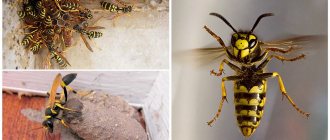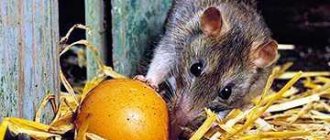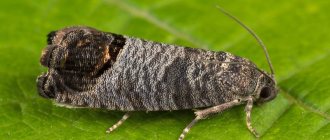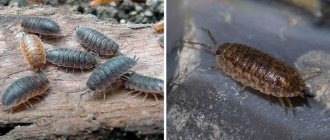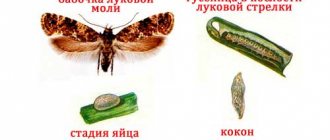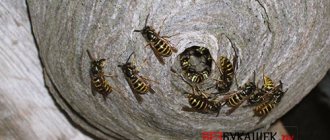Many gardeners are faced with the problem of moles in their summer cottage. For most, this is a whole tragedy; gardeners are frightened by earthen piles and believe that now their harvest has come to an end. Is it so? According to agronomists and experienced plant growers, moles are helpers, not pests.
Yes, animals can cause some concern and inconvenience, but they are not comparable to the benefits that moles bring. But everything is in order. Let’s understand the “pedigree” of the insectivore, its life activity, and dispel all the myths that are attributed to the animals.
Do they actually cause harm?
There is nothing in nature that would be left unattended or used for harm. Moles actually bring many benefits to the garden plot:
- Firstly, they eat the larvae of harmful insects, which can cause much more damage to plants than the animal.
- Secondly, moles loosen the soil and, thanks to their tunnels, an aeration process occurs in the soil, and the area will not be in danger of becoming swampy.
- Thirdly, mole is the number one remedy against mole crickets, Colorado potato beetles and other pests. If a mole lives on the site, mice and shrews are unlikely to appear, but they are the ones who pretty much spoil the crops.
Now let’s figure out what harm moles cause. Firstly, and perhaps lastly, the animal can damage the root system of plants when tearing up passages. The roots hang over the “roads” of the moles, and as a result, the tree or shrub may wither. There are also aesthetic inconveniences when moles live on the site. Few people are touched by earthen heaps everywhere. Especially if they are scattered across a smooth and neat lawn. That's all the harm.
Experienced gardeners have learned to benefit from being close to a mole. Moreover, neither moles, nor gardeners, nor plants suffer. But first things first.
Worm Eater
The main food of underground hunters is earthworms and, to a lesser extent, other invertebrates and their larvae. The mole digs a whole system of underground passages with holes and storerooms, and in certain places breaks an exit hole to the surface, which helps regulate the flow of air and ventilates the underground dwelling. That's where these mounds in the soil come from. Certain glands on the animal’s body secrete odorous substances that are attractants for earthworms. Attracted by this smell, they crawl into the mole corridors and inevitably fall into the teeth of a voracious predator. The mole does not eat all the prey; it gnaws other worms in half and takes them to cool storerooms, from where they cannot crawl.
Thus, there is help - a lot of pests and their larvae are on the menu of moles, and at the same time, significant harm - worms are necessary for our soils, without them productivity drops significantly.
How to drive a mole out of your area: modern devices
Having figured out what harm and benefit moles bring, you can begin to “expel” the animal. Agronomists do not recommend driving away moles forever. Why? From April to June, harmful insects are very actively awakening, developing, and breeding in the garden plot. The larvae actively eat young plants. In a word, spring and the first month of summer are the times when crops are actively eaten by pests. The mole will help get rid of the larvae as early as April, let him destroy the plant enemies, and then politely ask him to leave the site using humane methods for several months, when the root system of the crops begins to grow.
You can drive away the orderly using modern technologies and folk methods. Both have proven themselves. The mole leaves for two to three months, just during the period of active plant growth.
The most effective device for expelling moles is an ultrasonic device.
He gently and unobtrusively drives the animal away from the garden. True, along with the moles, all the beneficial insects leave. Keep this in mind. There will be no one on the site for 2-3 months. Why does the animal leave? The fact is that moles have a very acute sense of touch, smell and hearing. They react painfully to vibration, unpleasant sounds, and smells.
The device operates on this principle. It produces ultrasonic noises that the animals pick up, they cannot stand it, they get scared and leave the area. This method is considered one of the most humane and effective. The persecution of moles begins in June, when they have already done the main work useful for the garden.
Mole lifestyle
So, a mole is a small insectivorous mammal. He spends his entire life underground, only periodically rising to the surface, throwing out the dug soil. The front paws of moles are real shovels. They turn their palms outward so that it is more convenient to dig the ground in front of them and throw it back. The animal builds a nest at a depth of about 2 m, under the roots of large trees or under buildings. This makes his home practically invulnerable. Numerous passages diverge from the underground mole house in different directions. Underground “corridors” serve to collect and store food.
Moles are very voracious creatures. They eat an amount of food equal to their own weight per day. They feed several times a day, and in the intervals between feedings they sleep in the nest, curled up into a ball. A mole can remain hungry for no more than 14-17 hours, after which it simply dies. Therefore, the animal directs all its energy to search for food.
After the supply of food is exhausted, the mole is forced to expand “its” territory. Even one active animal is capable of digging through a multi-tiered branched network of passages, laying up to 50 m of “corridors” in one night. That is why the areas conquered by the pest are so significant.
These animals are solitary by nature, do not live in families and even attack relatives who come into their area. They make an exception only during the breeding period (April-June). Little moles grow very quickly. Already at the age of 1.5 months they reach adult size and leave their father’s house, going in search of their own land.
Folk methods of struggle
Traditional methods are based on the same principles as the ultrasound device. They are designed to scare the animal with noise and stop emergence to the surface with unpleasant odors. Only the most effective and humane ways to combat moles are described here.
Experts do not recommend filling holes and exits with chemicals - this will damage the soil, and therefore the plants.
The moles will still leave and then return again. It is not advisable to use petroleum products and other monstrous means; they will primarily harm crops and the person himself later. Let's be reasonable people and adopt proven, simple and humane methods.
- "Empty plastic bottle." The method is based on moles’ intolerance to noise. An empty plastic or glass bottle is dug into the ground with the neck up. The air turbulence created by the wind in the neck of the bottle produces a hum and whistle. The animals get scared by the constant noise and leave. You need to take care of the bottle so that no water is poured into it, otherwise the entire noise effect will disappear. The method has proven itself and is recommended by experienced gardeners.
- We plant “fragrant” plants. Marigolds, dill, parsley, celery - moles cannot tolerate all these plants. Plant them throughout the area, arranging them in decorative curtains. Just by the end of June they will grow up and begin to emit an unpleasant odor for moles. Prepare seedlings in advance and plant plants in May. Moles leave until the plants dry out in the fall.
- Tin cans guard the garden. Another “noisy” way. It works flawlessly until the structures are removed. For installation you will need an iron stake similar to a crowbar. It is stuck into the ground as deep as possible. Empty tin cans are hung on stakes. In windy weather, cans knock on iron, the unpleasant sound goes into the ground and forces moles to leave the garden. The animal does not appear until the structure is removed. Many have tried this method and were very satisfied. No one was hurt, all crops remained healthy.
- Fish waste. Fish waste - heads, entrails - is placed in the exits of mole holes. Insectivorous animals cannot stand the smell of rotten fish and hastily retreat back home. The disadvantage of this method is that over time, fish waste inevitably rots, the smell becomes thinner and disappears - the moles can return. However, initially it works flawlessly!
All these methods of fighting moles have been tested and work flawlessly. They do not harm the soil, plants, or moles themselves. As a result, the garden is safe, the larvae were destroyed in the spring - all that remains is to harvest the crop, safe and sound.
Doesn't like root vegetables
Let's start with the fact that moles have nothing to do with rodents, since they are representatives of another order - insectivorous mammals. Mice and rats are not related to them at all, and closer relatives of moles are shrews, hedgehogs and bats. This immediately closes the question of gnawing on carrots or beets. Although sometimes they can actually gnaw the roots if their intricacies become an obstacle on the underground path. But garden plants do not die from such minor damage to the underground parts. It’s worse if you dived seedlings into open ground, and a mole corridor passed right under them. You arrive at the dacha, go to the garden, see the withered tops of seedlings, run for a watering can, water the withered plantings, and they... immediately fall into an underground passage washed away by the stream.
Article on the topic Mole, go away! Rating of means to combat uninvited guests
Using traps
Many people are interested in how to drive moles out of the area quickly and efficiently so that they do not cause trouble. Manufacturers offer to simultaneously use different models of traps that belong to the same type. They are small pipes with covers on both sides. These devices are quite inexpensive and do not give practically any results, since often the animals simply do not go into an unfamiliar object that has appeared on the site.
You can purchase slightly larger traps so that their design is the same in diameter as the animal’s burrow, and the walls are rough. Thanks to special valves, it is possible to easily keep the animal inside. There are many varieties of such traps, in particular:
- tunnel traps;
- mole trap pipes;
- live traps;
- plunger devices.
When used correctly, you can quickly and effectively get rid of these animals in the garden. Traps are also good because they give a clear, visible result that immediately becomes obvious. Their main disadvantage is the complexity of installation, since you need to dig out the mole's passages. It is also important that it will be necessary to regularly catch animals that periodically appear on the site.
Live traps work on a very simple principle, since the animal easily gets into them and cannot get out. There are ready-made products, but you can easily make a trap yourself. You can use plastic water pipes or bottles for this. In addition, a pit trap can be used, which is a wide bottle or glass jar located under the mole's path. The animal simply falls into it and cannot get back out.
In addition, you can use traps that simply kill the mole, but this is not very good, since the animals do not cause much harm.
Why you should never get rid of moles on your property: they are not your enemies, but your helpers
Moles form large cavities in the soil, improve air exchange in it and the absorption of rainwater during rainstorms
Photo: Shutterstock
Beginning summer residents sometimes step on the same rake. For example, beds are dug up too often. Or they overdo it with watering. They forget about fertilizing, pruning, and weeding. And on top of that, they declare war on moles, sincerely believing that they are being eaten up by natural gifts. Brazenly. Cynically. For free. Moreover, they leave behind these ugly tubercles. The lawn looks like it was after a bombing.
Yes, that's what many people think.
However, competent gardeners tear these patterns into small pieces. They wash beardless gardeners like fifth graders. They chuckle condescendingly, crossing their arms with calluses on their chests.
Because moles on your land are irreplaceable helpers who work day and night for free. They don't work for you for a fee. And for the idea. They literally save your trees, fruit and berry crops. They are engaged in land reclamation.
Recently, one well-known agronomist, gardener, and landscape designer, Sergei Sidorenko, published another post that blew up the Internet (it would be nice to reproduce this text and drop it in batches from helicopters - over summer cottages and the private sector).
Let's try to highlight the main points.
1. Many people will probably be surprised, but moles do not eat roots and bulbs. At all. They are from the order of insectivores.
2. Moles form large cavities in the soil, improve air exchange in it and the absorption of rainwater during rainstorms. Just a couple of hours - and 20 cm of precipitation - without runoff! - they disappear somewhere. Later this water comes out as springs from molehills. And so, thanks to moles, the garden in the Krasnodar Territory does not need to be watered even in the heat.
3. The soil with these animals becomes more fertile. And it is moles (along with worms) who dig it, not humans. All that remains is to help with compost and use high mowing on the meadow lawn. As a result, coniferous trees grow by two meters, chestnut trees bear fruit in their fifth year, seedlings take root without watering, old apple trees and nuts increase their yield.
4. Moles maintain the population of earthworms by eating the weak, sick and surplus. They also deter slugs and beetles, which actually destroy plants.
5. Underground passages provide shelter for many small animals (these are wasps, ground beetles, shrews, and lizards), which also deter slugs and beetles. And many others.
HELP "KP"
Sergey Sidorenko, a native of Omsk, has been creating harmonious gardens for many years. Works in the Krasnodar region. And he is a supporter of a natural and sustainable ecosystem - without chemical treatments and mineral fertilizers. The soil is essentially cultivated by earthworms, insects, rodents, and moles. And it has a favorable porous structure. In the botanical garden “365”, where Sergei works, more than 700 species and varieties of plants from different parts of the Earth are cultivated. Studied at Omsk Agrarian University. Author of books, lectures and thematic publications. UN expert in the field of agriculture, permaculture and sustainable development. Married. Has five children.
THE MASTER OF THE EARTH IS THE MOLE, NOT YOU
In short, it was in vain that we rolled a barrel at the moles. They are, one might say, Stakhanovite heroes. And we, sir, curse them. Some even try to kill these animals. They put out rattles. Poison is poured into the holes. Ultrasonic repellers are installed.
“And none of these methods is effective,” ex-State Duma deputy and dacha guru Andrei Tumanov . - Unless a wire mole trap makes sense. But, believe me, getting rid of moles is obscurantism and stupidity. I've been talking about this for decades. And still there are people who attribute all sorts of gnawing to these animals. Listen. Moles are not vegetarians. And they are not omnivores, unlike rats. They consume all kinds of caterpillars. The very ones who want to leave you without a harvest. For that matter, the mole is not just your neighbor. He is the owner. He has lived here for thousands of years. And you came for a couple of days and decided to kick him out. Well, try it. Then we'll see how you fight the May Khrushchev. Who eats like a horse. Well, yes, sometimes moles destroy beds. They leave behind so-called hunting holes. But their benefits are much greater. Moreover. If you do get rid of the moles, others will sooner or later take their place.
Summer resident Tumanov agrees with agronomist Sidorenko on all points.
WITHOUT UNDERGROUND HORES, PLANTS ARE SMOKING
“If you don’t want earthen mounds to appear on your lawn, you can use a special polymer mesh,” agronomist Mikhail Vorobyov told KP . — It is laid to a depth of 25 cm. Then the earth is poured back. And on top there is a lawn. Moles will bump into an obstacle and avoid this place. But to drive them away completely, of course, is wrong. Who will eat the larvae of cockchafers? Who will destroy the mole cricket, a real nightmare of any gardener? What about wireworms that spoil potatoes? If you notice that someone is eating your carrots (or tulip bulbs, for example), do not blame the moles. This is done by either carbysh or field mice. Well, there’s one more significant plus. Long and durable earthen passages. During rainfall, they lose a lot of water. And in dry weather, which is also very important, air penetrates underground. Without it, the root system begins to suffocate. Organic matter does not decompose properly. And gleying occurs. The earth acquires a bluish tint and loses its fertile qualities.
BY THE WAY
Before the 1917 revolution, moleskin coats were popular in Russia. And they were very expensive. This animal has special fur. Nothing sticks to it. And some merchant could roll around drunkenly in the mud, then shake himself off and go to a meeting of the Russian Assembly. Or back to the restaurant. Such a fur coat cannot be called very warm. But very beautiful, noble, quite presentable. Under Soviet rule, such luxury was abandoned. Nowadays, the price for one such fur coat starts from 250 thousand rubles. And this is considered inexpensive, because one product requires approximately 500 animal skins.


